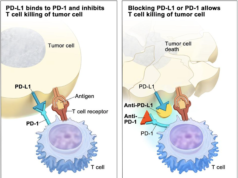Cancer is one of the world’s leading causes of death, accounting for almost 10 million fatalities in 2020.
It does not discriminate and affects people of all ages, races and genders. In the United States alone, it is estimated that 1.9 million Americans will be diagnosed with a form of cancer. Many of the standard of care treatment options like chemo and radiation are often hard and can lead to their own set of problems and lose effectiveness over time.
Recently, a non-invasive treatment, Cryoablation, has been getting some steam as an option for some patients.
Cryoablation describes a procedure in which a very chilly liquid or a cryoprobe is used to freeze and eliminate cancer cells. A cryoprobe is cooled with substances such as liquid nitrogen, liquid nitrous oxide, or compressed argon gas. And a few cutting edge hospitals have been combining cryoablation with immunotherapy for some promising results.
But it is not new, cryoablation is a FDA-approved technique for treating numerous solid tumors measuring less than 2 centimeters. It is, however, relatively uncommon in the United States. Cryoablation has been shown to be successful in removing multiple tumors over a single treatment session when combined with the direct injection of an immunotherapy adjuvant or a combination of immunotherapy adjuvants from around the world.
How Does It Work Exactly?
Cryoablation employs radiographic guidance, a cryoprobe, and liquid nitrogen or argon gas to destroy tissue. The technique creates an intense cold that destroys diseased cells, including cancer cells. Cryoablation is used to treat a variety of diseases as well as tumors in the liver, kidneys, bones, lungs, and breasts.
Diseased tissue is unable to withstand the extreme cold and ends up dying from:
- The formation of ice in the fluid outside the cells which dehydrates the tumor.
- Intracellular ice formation in which crystals of intracellular fatal ice form and can destroy almost any cell.
- Bursting from the pressure caused by the ice formation inside the cell
- Loss of blood induced by hypothermia, when blood flow is restricted in the affected tissue. Cells die when their blood supply is cut off as a result of ice forming in tiny tumor vessel vessels, resulting in clumping.
Due to the mechanism by which cryotherapy lead to cell death, tumors are repeatedly frozen and thawed, doctor will often use multiple freeze-thaw cycles
Cryoablation Is Synergistic With Other Therapies
Because of the mechanism of cell death induction, cryoablation appears to be synergistic with other treatments like immunotherapy. The intracellular components tumor remains after the treatment, and while it does not grow; it emits several molecules that attract the immune system.
Following this stage, a tumor-specific immune response is triggered, prompting the body to attack cancer. This is especially advantageous for immunotherapy because the aim is to train the body’s immune system to identify cancer cells. Only a small percentage of patients respond favorably to immunotherapy alone and treatments like cryoablation might help more patients.
Using Adjuvants For Better Results
An adjuvant is a substance that boosts the immune system’s response to an antigen. They’re often used to lower the chance that the cancer will return, and to improve the outcome of cancer treatments from chemotherapy to immunotherapy.
After surgery, cancer cells may be left behind. Cancer cells may also be circulating in the blood and lymphatic system. The traveling cancer cells do not show up on imaging tests. They can reach distant organs and develop new tumors if they are not treated.
By using an adjuvant the immune system may recognize these cells and mount an immune response.
Cryoablation + Immunotherapy
The use of adjuvants and cryoablation is advanced science and is only practiced at a few by a few leading-edge facilities around the world.
One such place pushing the envelope of what is possible when you combine cryoablation + immunotherapy is CHIPSA Hospital, in Playas de Tijuana, Mexico. But using cutting edge science for cancer patients is nothing new to them. They have been on the forefront of advanced immunotherapy for over 40 years and continue to integrate with other cancer treatments, including conventional therapy in a truly integrative approach.
To learn more about CHIPSA’s approach to Cryoablation + Immunotherapy, Click Here




























